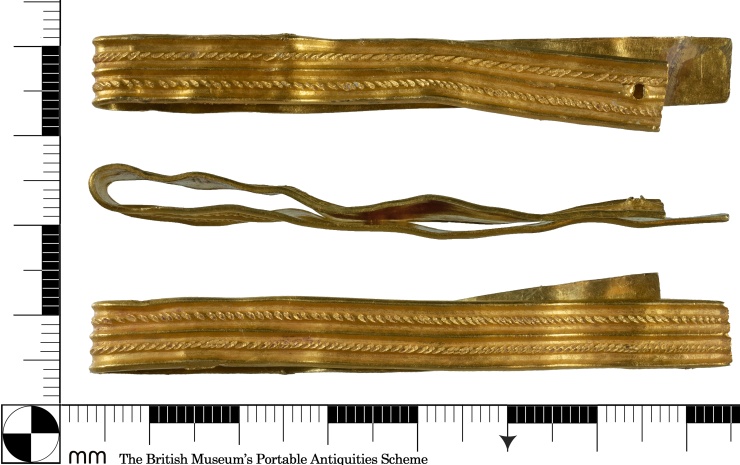Němec:to jsou názvy jak z Blesku nebo z Novinek.cz. Rok od roku to stojí za větší bačkoru.
Boy was walking his dog and found a unique 2000-year-old gold Roman bracelet
Categories: Nálezy nejenom s detektorem ve Velké Británii a Irsku

Two years ago, in a field near Pagham in West Sussex, then 11-year-old Rowan Brannan discovered a rare 1st century Roman gold bracelet. It is an ornate armilla-type bracelet, awarded to Roman soldiers for valour. It has now been declared a treasure.
One day, Rowan and his mother Amanda were walking the dog when he saw a shiny piece of metal. He was used to collecting things, though his mother had ordered him to throw most of his finds away. This time, however, the boy insisted and was adamant that it was gold, though his mother insisted it was just an old piece of fence or some other piece of junk. "It was normal for me because I collect a lot of things I probably shouldn't," the boy later said.
At home, he tried to examine the find and it did indeed look like gold. When Amanda's friend, a detectorist, came over, he recognized something interesting in the object and sent photos to the club's manager. He promptly replied and recommended that the find be reported to the local finds liaison officer. Archaeologists subsequently confirmed that it was a genuine ancient Roman gold jewel. It was at that moment that Amanda realised how clever her son was.
The bracelet is incomplete, both ends apparently having been deliberately broken off. It's folded, quite worn and dented from two thousand years in the ground. The surviving part is 135 mm long and 8.1 mm wide. The jewel is decorated with three plain and two decorated ridge lines. The total weight of gold is 7.69 grams. Several examples of similar Roman copper alloy bracelets are known in Britain, but gold ones are much rarer.
This is only the fourth recorded in the Portable Antiquities Scheme database. Due to the low number of examples, archaeologists cannot say for certain whether gold bracelets were actually worn as cuff bracelets, but this is the prevailing view for now. Base metal bracelets are usually 12-22 mm thick, gold bracelets were much weaker. It seems that the more valuable the metal, the higher the rank of the officer.
The district of Pagham, where the discovery was made, lies in close proximity to the former Romano-British town of Noviomagus Reginorum, now known as Chichester. The bracelet probably dates from the first phase of the town - originally a Roman military base, founded in 43 AD and later completely rebuilt as a town.
The bracelet was declared a treasure by the coroner after two years of research. It will therefore be offered to museums for purchase and the proceeds will be split between the landowner and the finder.
Roman Nemec
Sources: finds.org.uk, dailymail.co.uk, themercury.com


The article is included in categories:



